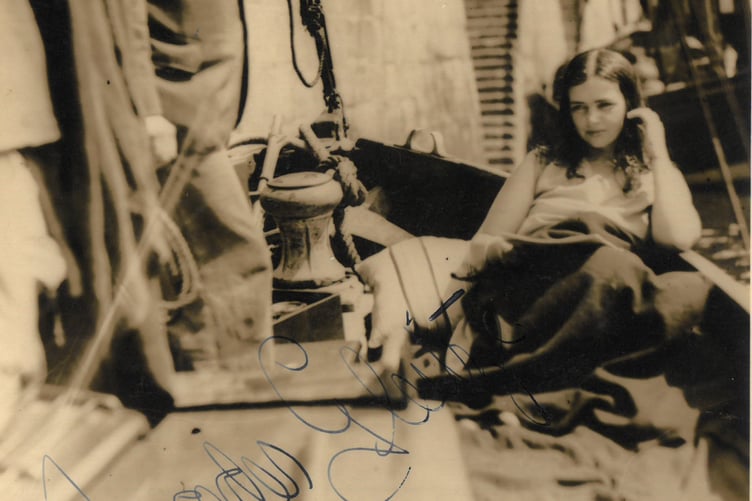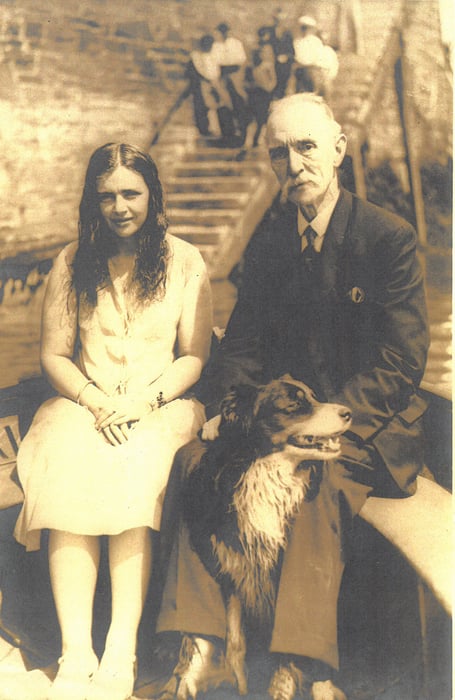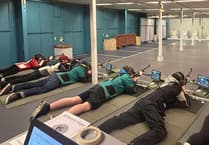Open-water swimming is one of the fastest growing forms of physical exercise in the Isle of Man.
The increase in interest accelerated during the pandemic when indoor activities were somewhat restricted.
Outside of the summer months, it used to be rare to spot swimmers in the sea, other than on New Year’s Day. Now there are quite literally dozens of people enjoying daily dips, whatever the weather. Many appear to be addicted to it.
Regular readers will be familiar with the amazing achievements of QEII language teacher Carole Laporte who has completed numerous heroic swims.
She did a full circumnavigation of the Isle of Man during 2020 in 17 stages, followed the next year by a 56-mile swim round the Isle of Arran in 13 stages.
Last July Carole took on her toughest challenge yet when swimming round Jersey non-stop - a distance of 31 miles - in 10 hours and 25 minutes.
In June 1930 Mercedes Gleitze became the first person to swim round the Isle of Man.
Three years earlier she was the first British woman to swim the English Channel and last year a biographical drama film about that particular achievement was released. Vindication Swim stars Kirsten Callaghan in the lead role with John Locke playing her coach and Victoria Summer as a rival swimmer.

Local broadcaster and journalist, Charlie Morrey, recently compiled the following article on the British woman’s Round-Mann swim.
For 90 years the Gleitze family were unaware of their ancestor’s achievements, only finding out after her death when they stumbled across an archive she’d kept documenting her swims.
A bilingual secretary in Westminster with no financial backing, she was at the forefront in the struggle to break through existing prejudices against women competing in sport.
Not only was she the first person to swim round the Isle of Man and the first woman to swim the English Channel, she also completed the shorter distance across the Straits of Gibraltar to North Africa. After her extraordinary triumphs she became the face of Rolex watches.
Gleitze limbered up for her round-island attempt at the former Henry Bloom Noble swimming baths in Victoria Street, Douglas on June 10, 1930.
This by no means was an ordinary warm-up as she broke her previous endurance record by swimming continuously for 37 hours.
Three days later she set off in an anti-clockwise direction from Douglas Bay. The attendants that joined her along the way included Miss Purcell and Mrs M. Black, both from Ramsey, and Miss Cleator from Ballakeil, Smeale.
A crowd was waiting at Queen’s Pier, when she eventually stepped ashore in Ramsey. She stayed the night at the Mitre Hotel, overlooking the quayside near to the Swingbridge. On this first stage she’d covered a distance of 17 miles.
The next day was a shorter stint last two-and-a-quarter-hours, yet she still covered a distance of eight miles to the Point of Ayre. Incurring an injury to her eye from the buffeting of the waves, mixed with damage from the sun’s rays led to her wearing a veil that day.
Known for its treacherous tides she battled against the sea but it proved too much and a decision was made to take her out of the water on the eastern side of the Point.
After a bit of struggle, Mercedes managed to navigate away from the Point of Ayre the following day - at one stage asking the crowds to sing ‘Ellan Vannin’ to help her through.
Later that day the wind increased, causing the sea to roughen. There was no sign of her from land for a while, so not surprisingly anxiety began to build. She eventually reached Peel at midnight, where the breakwater was full of supporters and onlookers. She was kindly accommodated for the night at Peel Castle Hotel.
Over the coming days she swam beyond Port Erin, only coming into problems again as she reached the Calf of Man. A strong south-westerly wind, choppy seas and pouring rain subjected her to the most severe experience in the whole swim.
At the entrance to the Sound the sea was frothing and waves were rolling through at a fierce speed. It would’ve been suicidal to attempt to go through the Sound. With great difficulty, Mercedes was taken out of the water at Kitterland and spent the night at the Golf Links.
The next day she set out at noon for the penultimate stage of her swim, successfully making it through the Sound and beyond Port St May to reach Langness.
On Sunday, June 22 she made her way to Douglas. From a point at Santon she could not be fed, and from Port Soderick at times she could not be seen. The waves were dashing over the support vessel and there were genuine fears for the woman’s safety, as it would have been impossible for the pilot boat to pick her up.
But Mercedes swam bravely through to reach Douglas precisely five hours after leaving Langness. She received a great ovation at Douglas and was congratulated by the Mayor, Councillor William Quirk JP.
A newspaper report covered a presentation to Miss Gleitze at the Villa Marina the following evening when she received an engraved gold medal from an anonymous local gentleman; a handsome cheque from the management of the Villa and a scarlet flag, on which was embroidered the Manx Arms from the Isle of Man Steam Packet Company.
Setting and breaking records wasn’t Mercedes’ only legacy. Known for her generosity she went on to use her prize money to set up a homeless refuge in Leicester during the Great Depression. The Mercedes Gleitze Relief in Need Charity continues to this day.
She wrote: ‘Sea swimming is a beautiful thing, in fact an art – an art whose mistress should be not the few, but the many, for does not the sea and its dangers cross the paths of thousands? Nay, millions!
‘What could possibly speak more for man’s prowess as an athlete than the ability to master earth’s most abundant, most powerful element – water, no matter what its mood.’



.jpeg?width=209&height=140&crop=209:145,smart&quality=75)
.jpeg?width=209&height=140&crop=209:145,smart&quality=75)
